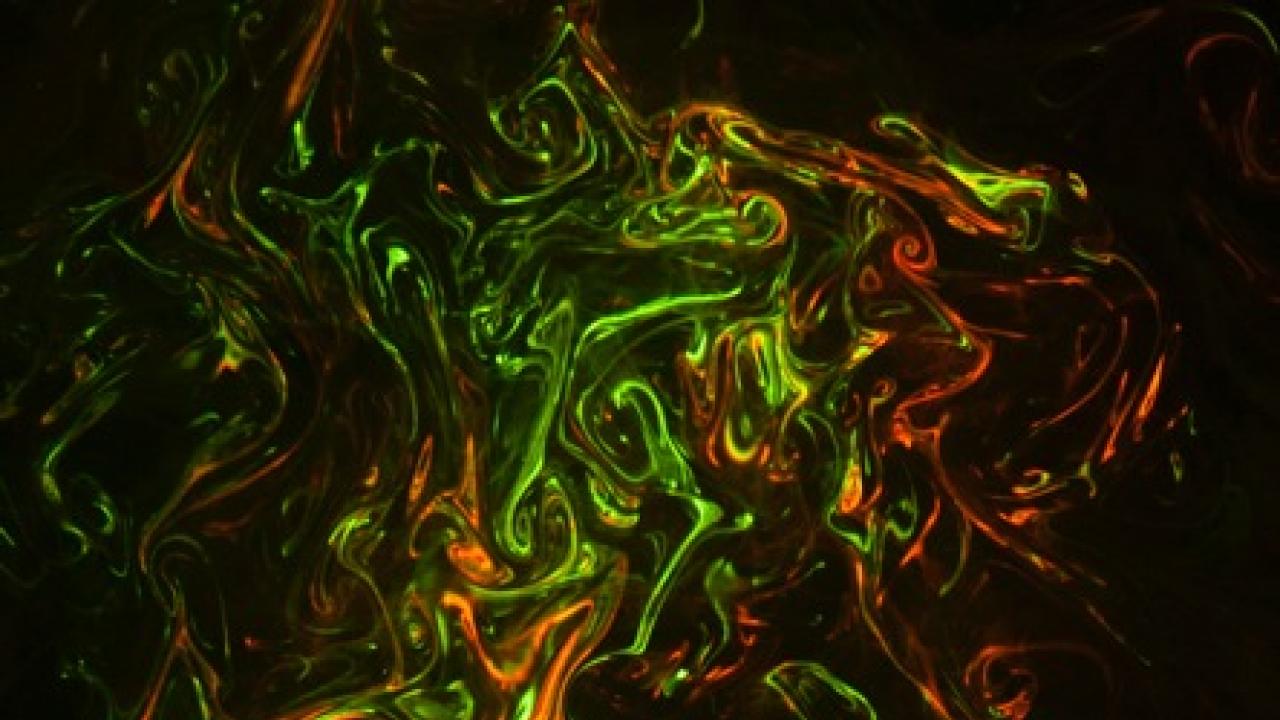
Luna and silk moths are mysterious masters of fluid dynamics. At dusk during their one week of adult life, the females send small molecules through the air to waiting male suitors hundreds of metres away.
These small molecules, chemicals known as pheromones, overcome the challenges of dilution, competition with other molecules, and turbulence in the atmosphere to direct male moths to their mates. "The female moth has sent a communication line through the atmosphere - an extremely noisy medium," said Antonio Celani, the ICTP researcher who has derived the equations that describe the moth pheromone landscape for the first time, as he and his colleagues report in an upcoming issue of Physical Review X.
Previous studies had shown that male moths responded to as few as 10 molecules of pheromone, and field work demonstrated that 80% of male moths could find the female source in as little as 15 minutes from a distance of several hundred metres. "The males get a scrambled message, but they're very efficient at decoding it," said Celani, whose research focuses on how organisms communicate through chemical signals. Male moths are able to do this because of their large, feathery antennae filled with neurons attuned to the female scent. Celani's work provides the next piece of the puzzle: determining the strength and frequency of pheromone signals wafting through the air and hitting the moths' antennae.
In their recent paper, Celani and his colleagues Emmanuel Villermaux, an experimentalist from Marseilles, and Massimo Vergassola of the University of California San Diego asked how physics might describe the landscape of the signal - where, when, and how strong the pheromones are in the air. They used equations to describe the patterns of pheromone "whiffs" and tested their predictions against laboratory and field data.
Previously, theory could predict only the average level of a chemical in the atmosphere. But as Celani and his colleagues show, this is an extremely poor proxy for the actual information encoded in the pheromone signal. When the moths are merely given a constant stream of signal, they quickly get used to it and learn to ignore it rather than navigating to the source. "The characteristics of the signal are important and helped to shape the moth's sensory system. Moths are sensitive to temporal structure," Celani said. "They care very much about the peak events, and how large and frequent they are."
Celani and colleagues found that there was information stored not only in short pulses - previous experiments demonstrated that silk moths can detect bursts of pheromone as short as 3 milliseconds, about the speed at which neurons fire - but also in much longer continuous whiffs of pheromone lasting seconds or even minutes. They also showed that many of the short bursts tend to cluster in longer groups.
These patterns also allow males to distinguish between different species of female with similar pheromones. Celani's work suggests that male moths can set thresholds that allow them to determine that the mixture they are smelling is coming from one female of their species rather than from two separate sources, enabling them to navigate to the right place.
"There's an enormous amount of information in that signal," Celani said.
Crucially, by elucidating the intensity and frequency of pulses, Celani's work has made it possible to replicate real-life signals that a moth might experience in the laboratory. That means scientists can finally conduct more realistic experiments to understand how the moths use the information they obtain from the structure of the pheromone signals to navigate to the source. Already, Celani and the other authors are collaborating with scientists carrying out similar experiments with moths and fruit flies.
Yet Celani's study has even broader applications, as it makes it possible to describe how all sorts of chemicals, from pheromones to pollutants, travel through the air. That could be useful for designing artificial noses, attuned to gather information from the patterns of molecules floating through the air, or even robots used to sniff out land mines.
Another practical application could be better pest management devices, which currently use a constant stream of pheromone to attract insects but could be made more efficient by matching the pattern of pheromone "whiffs" to that actually present in the wild. Celani also hopes to develop a device that uses carbon dioxide and lactic acid, two human smells, instead of pheromone to attract and eradicate mosquitoes in malaria-ridden regions.
The physical understanding of moth pheromone travelling through the air will thus enable not only a deeper understanding of moth communication but potentially also help us to understand and use our knowledge about olfaction more broadly.
Celani's paper appeared online on October 28. You may also access the synopsis of the paper.
















